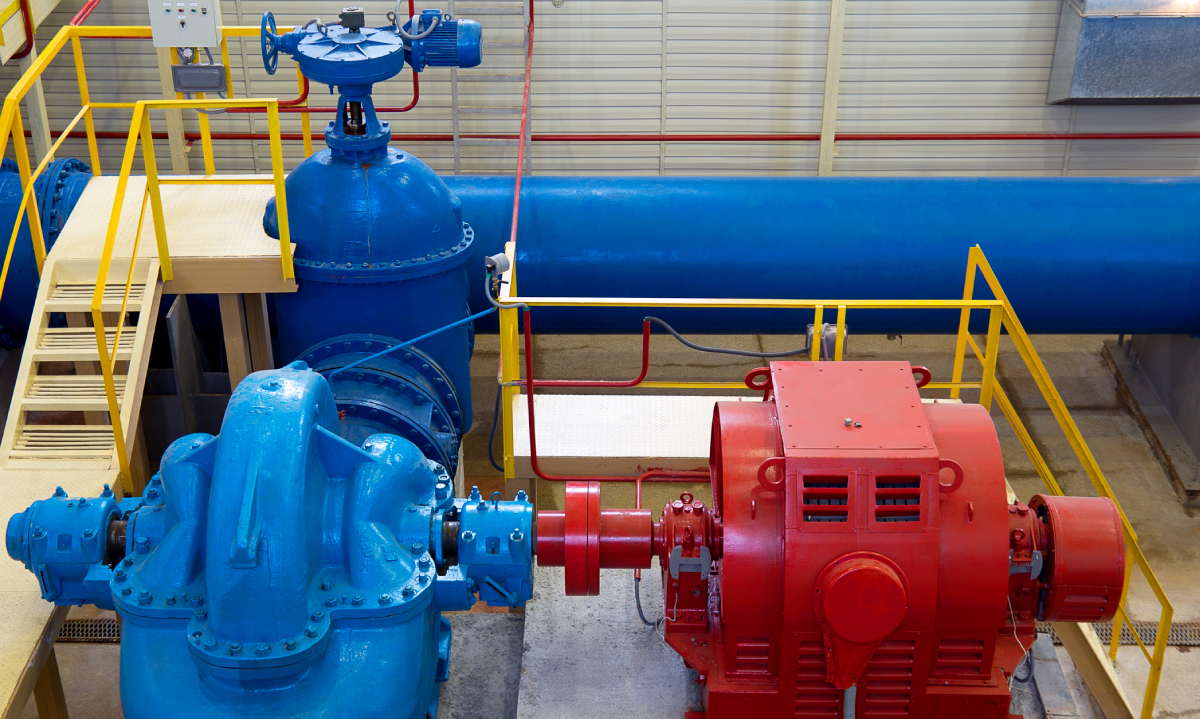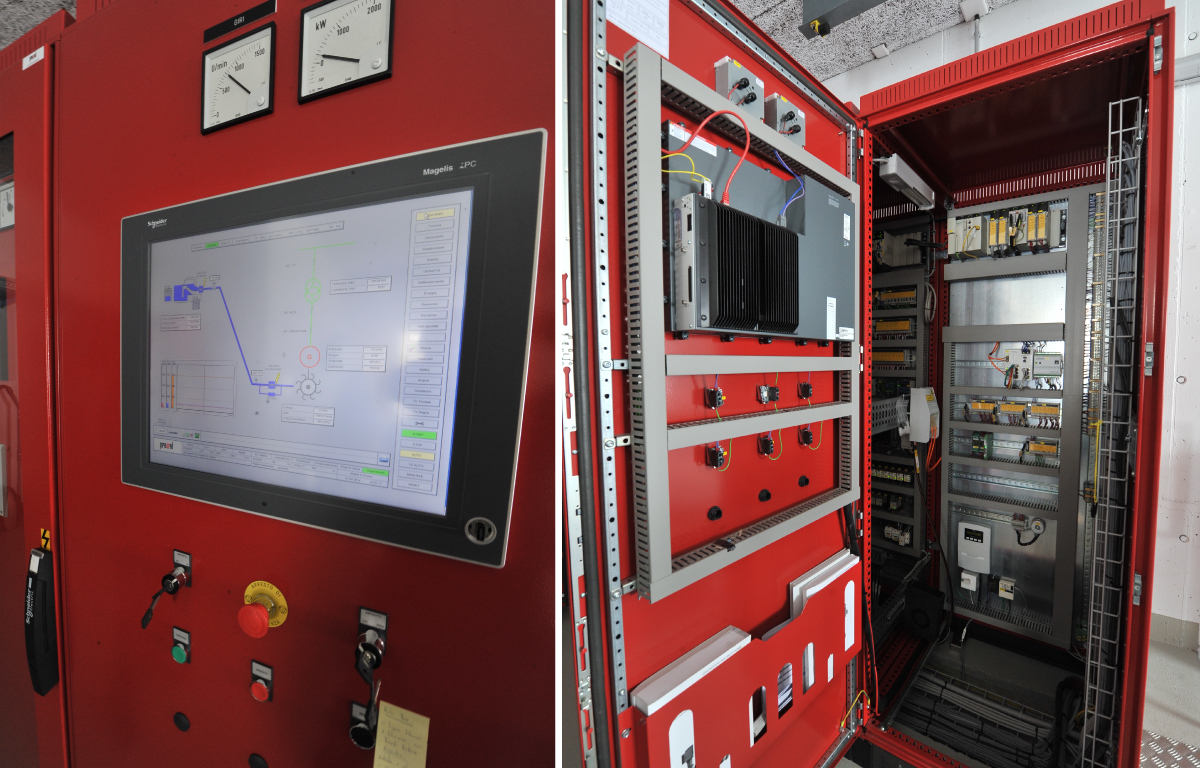Water pumping systems were first invented in the 18th century and have never stopped developing since. Nowadays, these stations are critical structures in any rural or urban area. In this article, we’ll talk about different kinds of pumping stations, what they’re used for, and also what they need to work adequately.
What’s a Water Pumping Station?
The primary purpose of pumping stations is to ensure the adequate distribution of water across the entire piping system. They’re necessary for reaching remote locations, where the central system lacks pressure, and also on hilly topography. The type and size of these stations will vary according to critical factors like expected demand, location and soil conditions.
Water pumping stations have been around for a long time. The first pumping system ever created was signed by H.A. Wirtz, in Zurich, in 1746. This system, powered by a stream wheel, pumped water from the Limmat river to a dye house.

Types of Pumping Stations
Main pumping stations are those which feed the distribution system. These stations must be installed close to a potable water or water treatment facility and are indeed part of those structures. One of the main functions of these stations is to pump water straight into the piping system.
“High-lift pumps” serve transmission lines and distribution systems by pumping water directly into them. “Booster pumps” do what the name suggests: they increase the pressure in zones far from the distribution system, like hills and slopes, for instance. This kind of pump is also used to handle above-normal volumes of water during peak times.
How It Works
There are mainly two kinds of water pumps in a treatment and purification station: horizontal centrifugal pump and vertical turbine pump (vertical centrifugal pump). Centrifugal horizontal pumps are used when the pumping station is above ground level and also when there’s limited space. Vertical turbines are necessary when the water source is located under the ground or within a surface. In this case, a column goes down to the suction well or until the water reservoir.
Availability Criteria
The type of pumping station required for each project is determined by a topographical analysis, assessing issues such as the likelihood of floods. A red line is a high likelihood of flooding in an area: no pumping station can be installed under such conditions. There must be an electrical power source, roadway accessibility and security. Additionally, there must be an adverse impact analysis, evaluating possibly negative impacts on the surrounding areas.
Before installing a new pumping station, it’s also necessary to consider the type of soil where it will be installed. The soil must be adequate for the foundations of the structure. This analysis is also necessary for determining the risks of groundwater problems, as well as proposing drainage and grading solutions.

Calculating the Demand
Several factors must be considered while calculating the demand for a new pumping station. There are mainly four criteria for this calculation: peak hour consumption, maximum daily consumption (MDC), annual average daily consumption (ADC), and simulated fire flow with MDC.
The building project must also consider future expansion needs and choose a site that’s adequate for the purpose. Such a project also involves the investigation of alternative piping solutions, connecting these pumping stations to the central system.
Electrical Panels for Water Pumping Stations
Electrical panels are indispensable tools in the management of water treatment and purification systems. A control panel in electrical engineering is responsible for the control and automation of several tasks, whether automated or activated by humans. Here’s the leading electrical equipment necessary for different pumping stations.
Programmable Logic Controllers (PLCs)
PLCs are the core and brains of industrial electrical systems. They control electromechanical processes, as well as the automation of different tasks. An electrical PLC control panel can vary in size and function and be tailor-made for specific projects. PLCs have a CPU which deals with inputs and outputs.
The input is the data collected from the station’s systems. The CPU analyses this data and decides upon the outputs or automated responses. The CPU also works with human-fed information, which includes pushes, electrical panels, touchscreens, keyboards, sensors and card readers. The main languages used in PLCs are Structured Text, Ladder Logic, Function Block Diagram, Instruction List and Sequential Function Charts.

Electric Gates
Electric gates and doors are fundamental for the safety and security of pumping stations. They control the access of people and vehicles, preventing the entrance of unauthorised personnel into the premises or specific areas in the station. You can find the best electric gate control panel here.
Control Panel Boards
There are countless electrical panel boards in pretty much every industrial facility. An electric control panel board concentrates multiple power supplies. These panels are highly customisable, and there are no limits to the number of power sources they can handle. They improve the reliability of the entire electrical system since they provide real-time data about equipment conditions and other relevant information.
Electrical Panels and Switchboards From Premel
Since 1947, Premel has been recognised as a leading option for electrical engineering solutions across several industries. Such solutions include the best electrical control panel components and tailor-made solutions for electrical panel design. Premel is based in Switzerland. It’s certified by ISO 9001, which ensures its high business standards and trustworthiness.
Premel’s services go way beyond sales, and clients can see the company as a partner for electrical panel replacement, upgrade pump station installation, and much more. All clients have access to a highly trained team of professionals and specialists ready to deliver top-notch services for both installation and maintenance, including industrial water treatment services.
Premel delivers the highest level of services when it comes to electrical solutions for civil engineering. You can count on Premel for electrical control panel wiring, PLCs, an electrical panel upgrade, and much more.
Premel has everything you need to get any water treatment station up and running. Learn more about Electrical Panels and Switchboards from Premel.
